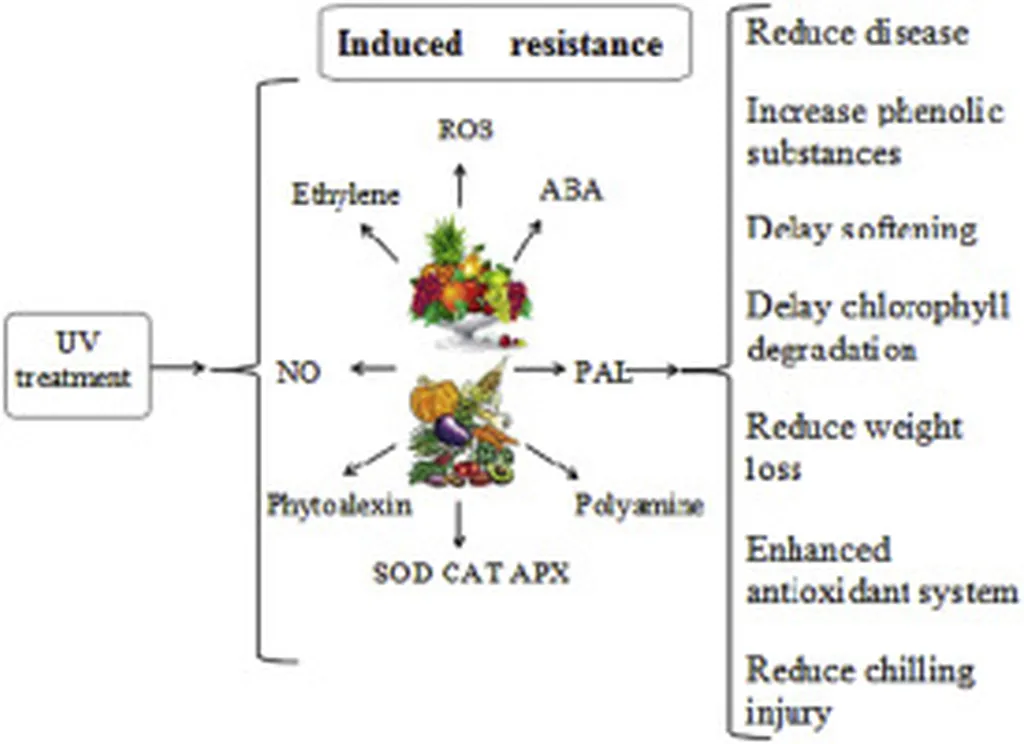In the ever-evolving landscape of food preservation, a novel technique is making waves, promising to extend the shelf life of fresh-cut fruits while ensuring safety and reducing waste. Researchers have combined ultrasonic atomization coating (UA) with ultraviolet (UV) irradiation to create a hurdle technology that effectively inhibits enzymatic browning and microbial contamination in fresh-cut apples. This innovative approach, detailed in a study published in *Ultrasonics Sonochemistry*, could revolutionize the way we preserve fresh produce, offering significant benefits for the agriculture sector.
The study, led by Jiayi Wang from the College of Smart Agriculture at Xinjiang University, explores the synergistic effects of UV irradiation and ultrasonic-assisted coating. Traditional methods of preserving fresh-cut fruits often fall short, with UV irradiation providing only temporary disinfection and coating methods generating waste and cross-contamination risks. The new technique addresses these issues by integrating the immediate disinfection of UV with the sustained protection offered by ultrasonic atomization coating.
“Our findings demonstrate that the combined UV-UA treatment not only inhibits the activities of peroxidase and polyphenol oxidase, which are key enzymes in browning, but also achieves superior microbial inactivation compared to individual treatments,” Wang explained. The optimal conditions identified were 7 minutes of UV irradiation followed by 3 minutes of ultrasonic atomization coating with 1% ascorbic acid. This combination resulted in a significant reduction in browning index and microbial counts, ensuring the quality and safety of fresh-cut apples during storage.
The commercial implications of this research are substantial. For the agriculture sector, this technology offers a more efficient and sustainable method of preserving fresh-cut fruits, reducing waste and enhancing product quality. “This hurdle technology can be a game-changer for the food industry, particularly for producers and retailers who need to maintain the freshness and safety of their products over extended periods,” Wang added.
The study’s results indicate that the UV-UA treatment effectively inhibits peroxidase and polyphenol oxidase activities, reaching 57–60% and 72–84% of control group levels during storage. This inhibition translates to a lower browning index, making the fruits more appealing to consumers. Additionally, the treatment achieved the lowest microbial counts (3.84–4.04 log CFU/g) for pathogens like Salmonella Typhimurium and Escherichia coli O157:H, as well as for aerobic mesophilic bacteria, molds, and yeasts during storage days 1–2.
The integration of UV disinfection with UA’s sustained effects not only enhances preservation but also avoids the liquid waste and cross-contamination issues associated with traditional coating methods. This dual approach ensures that fresh-cut fruits remain safe and visually appealing for longer periods, meeting consumer demands for high-quality produce.
As the food industry continues to seek innovative solutions for preservation, the UV-UA hurdle technology stands out as a promising advancement. Its potential to reduce waste, enhance product quality, and ensure safety makes it a valuable tool for the agriculture sector. With further research and development, this technology could become a standard practice in the preservation of fresh-cut fruits, benefiting producers, retailers, and consumers alike.
The study, published in *Ultrasonics Sonochemistry*, highlights the collaborative efforts of researchers like Jiayi Wang from the College of Smart Agriculture at Xinjiang University, underscoring the importance of interdisciplinary research in driving agricultural innovation. As the industry looks towards a more sustainable and efficient future, the UV-UA hurdle technology offers a glimpse into the possibilities that lie ahead.

